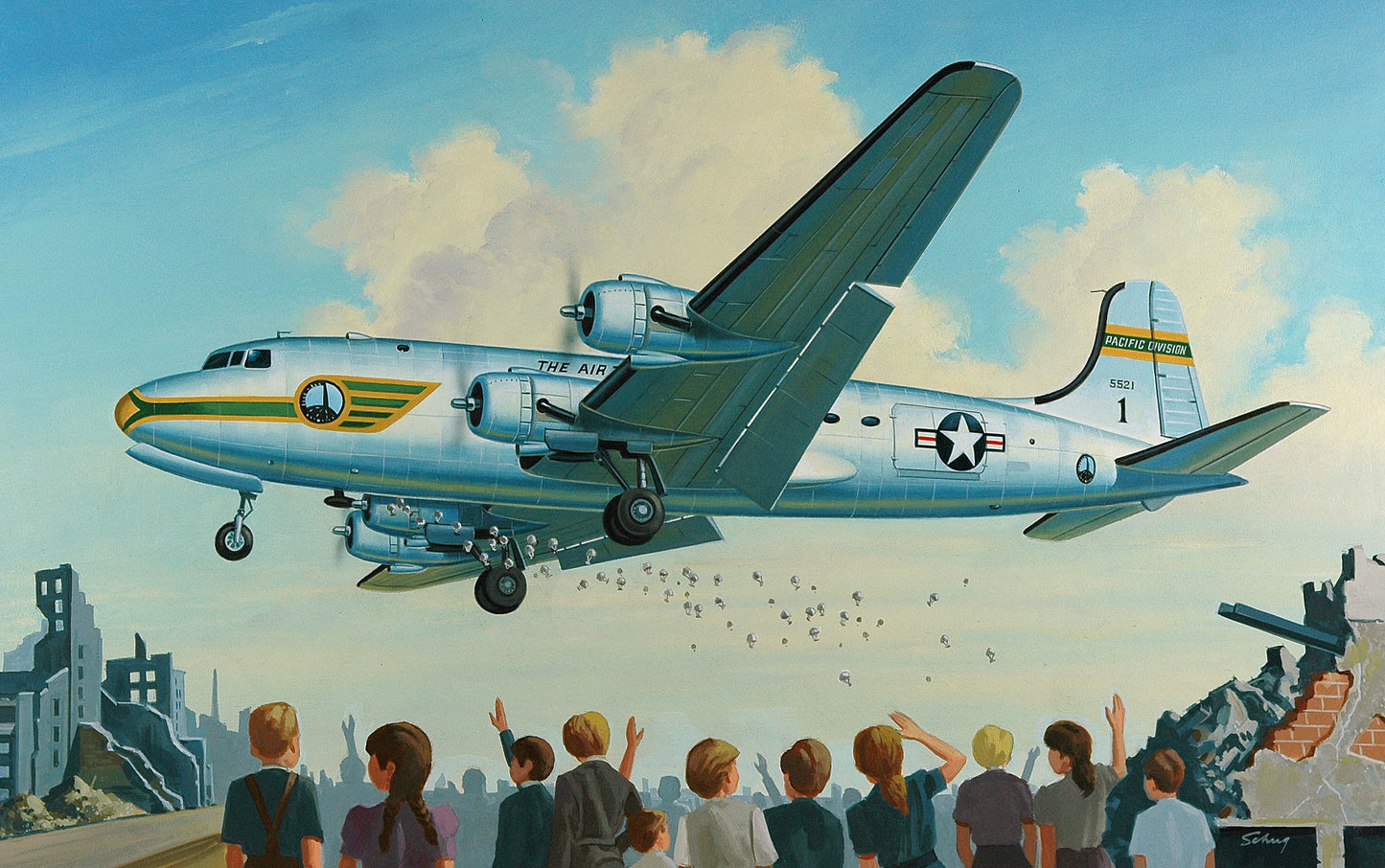The Art of Minicraft
C-54 Candy Bomber (Berlin Airlift)
C-54 Candy Bomber (Berlin Airlift)
Couldn't load pickup availability
Share
Original Tempera Painting
Signed: Sonny Schug
The C-54 Candy Bomber, also known as the "Rosinenbomber" or "Raisin Bomber," was a crucial aircraft during the Berlin Airlift, which took place from 1948 to 1949. It refers to the Douglas C-54 Skymaster transport aircraft that was used to deliver essential supplies to West Berlin during the Soviet blockade.
The Candy Bomber gained its nickname due to the pilot's initiative to drop small parachutes containing candy for the children of Berlin during the airlift. Lieutenant Gail S. Halvorsen, an American pilot, started this tradition, and it quickly became a symbol of hope and goodwill during a challenging time.
The Berlin Airlift was a massive humanitarian effort to provide food, fuel, and other necessities to the people of West Berlin after the Soviet Union cut off all surface transportation links to the city. The Candy Bomber's candy drops not only brought joy to the children but also symbolized the solidarity and support of the Western Allies for the people of Berlin.
The C-54 Skymaster played a vital role in the success of the Berlin Airlift, delivering tons of supplies on a daily basis. It became a symbol of the determination and resilience of the Allied forces, as well as a testament to the power of humanitarian aid in difficult circumstances.
The Candy Bomber's legacy lives on as a symbol of goodwill and compassion, reminding us of the positive impact that small acts of kindness can have in times of adversity.


